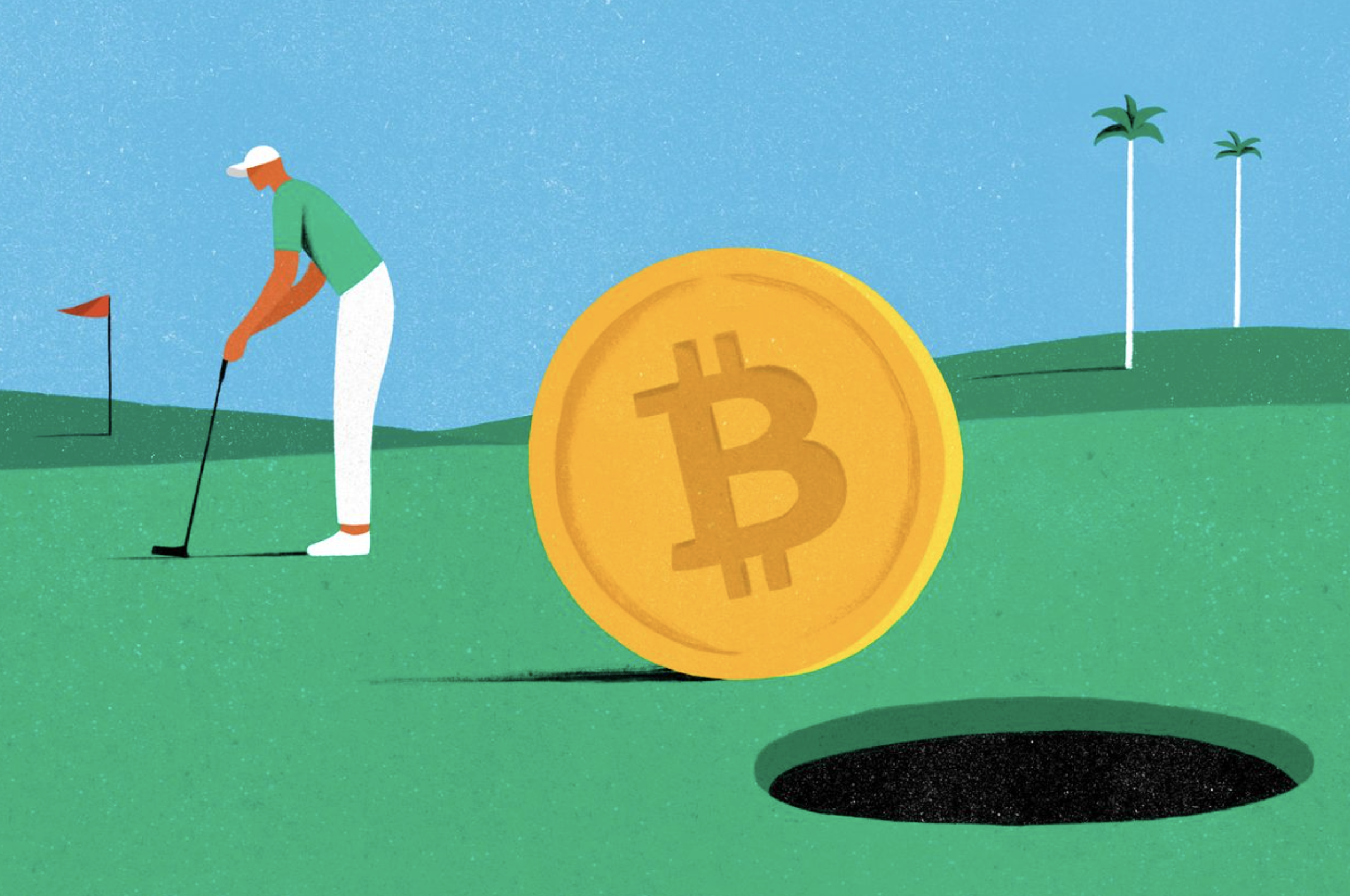Bitcoin: A Solution to Excess Wealth?
Canada is planting 30 million trees this season. The purpose is to build a powerful carbon sink.
Carbon is not the only thing that modernity produces in excess. There is a surfeit of capital. Absorbing it has become a major challenge and threatens financial stability. There are more than $13 trillion of negative-yielding bonds in the world. Despite claims of exorbitant privilege, the U.S. government pays about 1.5% interest to borrow for a decade, historically low and below the Federal Reserve’s inflation target. Japan and Germany, the next largest market economies, can borrow at considerably lower rates. Germany charges investors nearly 20 basis points, or 0.2%, annually for the privilege of lending to it. It is not coincidental that cryptocurrencies were born in an age in which savings are abundant.
Capital is subject to the same law of supply and demand as other sectors of society. Capital is cheap because it is abundant. Large companies have more money than they know what to do with, so they return it to shareholders in stock buybacks and dividends. The drive to improve returns fuels mergers and acquisitions.
Equity valuations are stretched. House prices in many countries are rising quickly. Credit spreads, which measure how much one is paid for a unit of risk, are historically tight.
Excess capacity is another expression of surplus savings, that is, overinvestment. The U.S. economy is roughly the size it was on the eve of the pandemic. Yet around 7.5 million fewer people are working. Despite a booming economy, the U.S. is using a little more than three-quarters of its industrial capacity. Even at the end of 2019, it was just above 76%.
Capital is abundant because market-based economies are huge wealth creators. By applying science to production and finance, capitalism has been incredibly successful. And it turns out that to succeed, capitalism does not need to permit slavery, employ children, or deny women the right to vote. It can provide unemployment insurance, social security, and head-start services without being dictated to or sacrificing personal liberty. Its plasticity confounds critics. It can be reformed.
However, capitalism’s biggest weakness grows out of its most powerful strength, one that cannot be reformed away. It produces wealth on levels heretofore inconceivable. We live in an epoch that King Midas would recognize. We are choking on our wealth. Even if one does not recognize the disease (the idea of surplus capital is still controversial in some circles), the symptoms are undeniable. The return to capital is low, whether it is interest rates or profit margins. Redundant investment (excess capacity) is another symptom. Efforts to rationalize industries are part of the M&A wave. Corporations have become net providers of capital, no longer net borrowers. Speculation is extensive, and the gamification of “investing” began long before Robinhood and the legalization of sports betting in the U.S.
If we will not address the underlying distributional issues and the disparity of income, wealth, and power, then we need to channel the surplus savings away from those expressions that help fuel economic and political instability. What is needed is a vehicle that does to savings what trees do to carbon. Voilà! Enter crypto.
Some diehards continue to insist that crypto is money. El Salvador’s President Nayib Bukele recently pushed through plans to recognize Bitcoin as legal tender. More than two-thirds of the nation’s population lacks bank accounts or credit cards. Bitcoin rose about 270% from mid-December to mid-April and has since been halved. Volatility makes this a dangerous experiment. Let’s see if it lasts longer than Tesla’s offer to sell cars for Bitcoin.
Perhaps the function of crypto is to redirect savings from lifting equities to even more stretched values, or pushing nominal and real rates lower, or creatively destroying goodwill in acquisitions. Some have said that blockchain was a solution looking for a problem. The problem that crypto may attempt to address is the need for a new asset to absorb the wealth in a nonthreatening, ideologically safe way.
Crypto was born during a period of great concentrations of wealth, and it cannot help but reflect that origin. Despite the talk of decentralized finance, ownership of crypto, let alone trading, appears highly concentrated. One recent study found that more than 72% of Bitcoins (now about $33,000 each) are owned by those with 100 or more Bitcoins, along with miners and brokers. Nearly 32% are owned by those with 1,000 or more Bitcoins. A recent survey by Gemini, a crypto exchange, found that the “average” crypto trader was a 38-year-old male whose household made about $111,000, roughly 60% more than the median family income in the US.
The volatility and environmental issues of some models (proof-of-work) suggest that even as a centralized store of value, crypto’s role as a savings trap may be limited. It will not solve the challenge of capitalism’s unparalleled ability to produce wealth. The current steep decline in the face of strong price pressures weakens arguments of a hedge against inflation and as store of value. Ultimately, crypto is another expression of the surfeit of capital.
Marc Chandler is chief market strategist, Bannockburn Global Forex.
Reprinted by permission of Barron’s. Copyright 2021 Dow Jones & Company. Inc. All Rights Reserved Worldwide. Original date of publication: June 28, 2021.
 Copyright 2020, Dow Jones & Company, Inc. All Rights Reserved Worldwide. LEARN MORE
Copyright 2020, Dow Jones & Company, Inc. All Rights Reserved Worldwide. LEARN MORE
This stylish family home combines a classic palette and finishes with a flexible floorplan
Just 55 minutes from Sydney, make this your creative getaway located in the majestic Hawkesbury region.
Continued stagflation and cost of living pressures are causing couples to think twice about starting a family, new data has revealed, with long term impacts expected
Australia is in the midst of a ‘baby recession’ with preliminary estimates showing the number of births in 2023 fell by more than four percent to the lowest level since 2006, according to KPMG. The consultancy firm says this reflects the impact of cost-of-living pressures on the feasibility of younger Australians starting a family.
KPMG estimates that 289,100 babies were born in 2023. This compares to 300,684 babies in 2022 and 309,996 in 2021, according to the Australian Bureau of Statistics (ABS). KPMG urban economist Terry Rawnsley said weak economic growth often leads to a reduced number of births. In 2023, ABS data shows gross domestic product (GDP) fell to 1.5 percent. Despite the population growing by 2.5 percent in 2023, GDP on a per capita basis went into negative territory, down one percent over the 12 months.
“Birth rates provide insight into long-term population growth as well as the current confidence of Australian families,” said Mr Rawnsley. “We haven’t seen such a sharp drop in births in Australia since the period of economic stagflation in the 1970s, which coincided with the initial widespread adoption of the contraceptive pill.”
Mr Rawnsley said many Australian couples delayed starting a family while the pandemic played out in 2020. The number of births fell from 305,832 in 2019 to 294,369 in 2020. Then in 2021, strong employment and vast amounts of stimulus money, along with high household savings due to lockdowns, gave couples better financial means to have a baby. This led to a rebound in births.
However, the re-opening of the global economy in 2022 led to soaring inflation. By the start of 2023, the Australian consumer price index (CPI) had risen to its highest level since 1990 at 7.8 percent per annum. By that stage, the Reserve Bank had already commenced an aggressive rate-hiking strategy to fight inflation and had raised the cash rate every month between May and December 2022.
Five more rate hikes during 2023 put further pressure on couples with mortgages and put the brakes on family formation. “This combination of the pandemic and rapid economic changes explains the spike and subsequent sharp decline in birth rates we have observed over the past four years,” Mr Rawnsley said.
The impact of high costs of living on couples’ decision to have a baby is highlighted in births data for the capital cities. KPMG estimates there were 60,860 births in Sydney in 2023, down 8.6 percent from 2019. There were 56,270 births in Melbourne, down 7.3 percent. In Perth, there were 25,020 births, down 6 percent, while in Brisbane there were 30,250 births, down 4.3 percent. Canberra was the only capital city where there was no fall in the number of births in 2023 compared to 2019.
“CPI growth in Canberra has been slightly subdued compared to that in other major cities, and the economic outlook has remained strong,” Mr Rawnsley said. “This means families have not been hurting as much as those in other capital cities, and in turn, we’ve seen a stabilisation of births in the ACT.”
This stylish family home combines a classic palette and finishes with a flexible floorplan
Just 55 minutes from Sydney, make this your creative getaway located in the majestic Hawkesbury region.






















